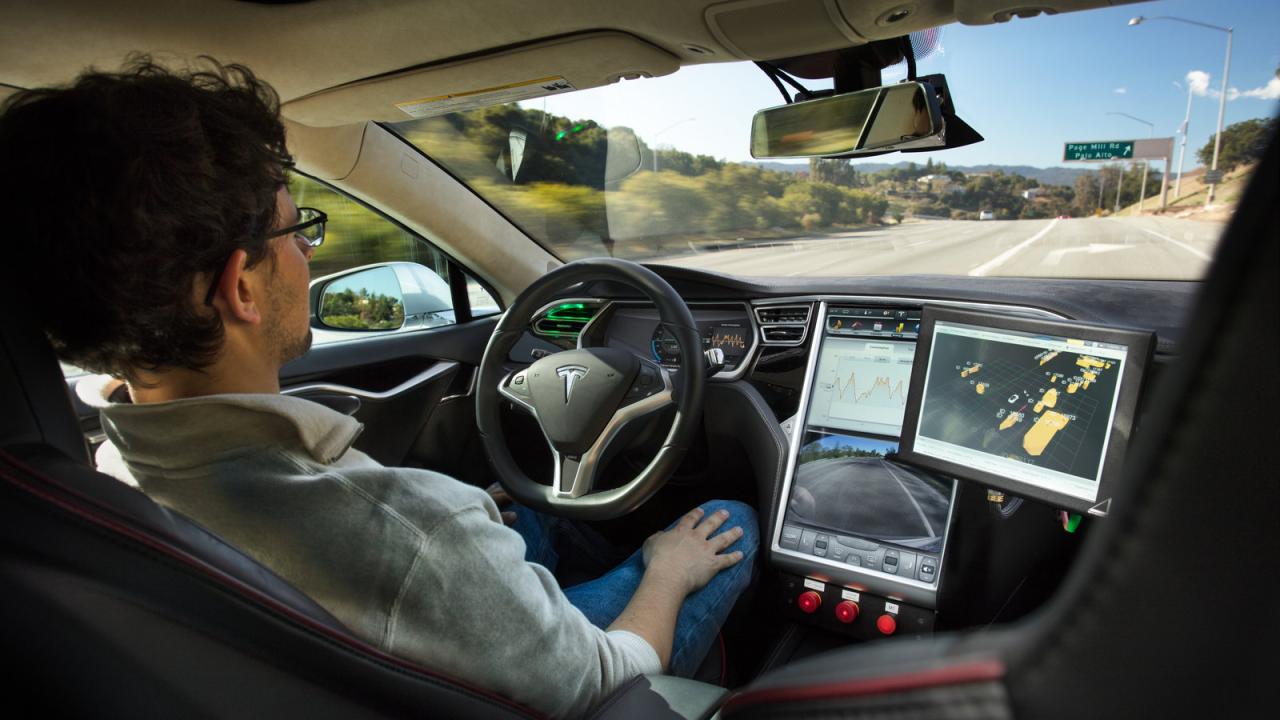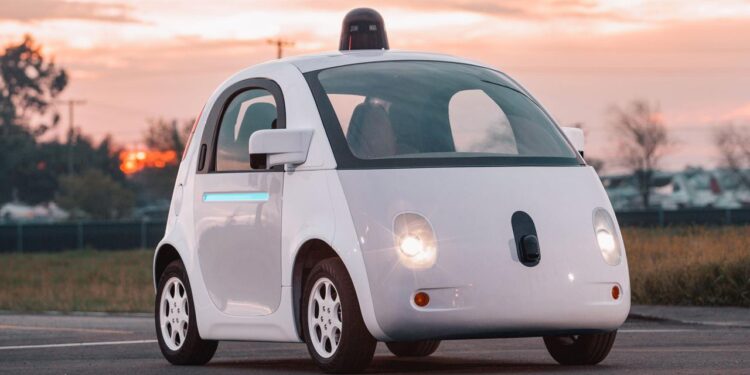The age-old relationship between human and automobile is undergoing a profound and irreversible transformation. For over a century, the act of driving has been a core part of our daily lives, a skill passed down through generations. Today, a new and powerful force is emerging from the depths of engineering and artificial intelligence: autonomous vehicles (AVs), also known as self-driving cars. These intelligent machines are poised to fundamentally reshape transportation, promising a future of safer, more efficient, and more accessible mobility. This comprehensive article delves into the self-driving revolution, exploring the foundational technologies that make this a reality, the diverse applications that will define this new era, and the immense opportunities and critical challenges that lie ahead as we hand over the steering wheel to intelligent machines.
For decades, the concept of a self-driving car was a staple of science fiction, a futuristic dream confined to the pages of books and the silver screen. However, a convergence of rapid technological advancements—from high-powered sensors and sophisticated AI to powerful microchips—has turned this dream into a tangible reality. The first generation of this technology began with simple driver-assistance features, like cruise control and automatic parking. But this has evolved into a new generation of vehicles that can navigate complex city streets, adhere to traffic laws, and make split-second decisions without human intervention. The global race to perfect and deploy these vehicles is being led by a diverse array of companies, from established automotive giants like General Motors and Ford to tech innovators like Waymo and Tesla.
The ultimate goal of autonomous vehicles is not just to automate driving; it is to create a new paradigm for transportation. The benefits are staggering. AVs have the potential to drastically reduce traffic accidents, as human error is the cause of over 90% of all collisions. They can optimize traffic flow, reducing congestion and cutting down on fuel consumption and emissions. They can also provide a new level of mobility for the elderly, the disabled, and the young, for whom traditional driving is not an option. This is more than a technological upgrade; it is a societal shift that will redefine our cities, our economies, and our daily routines. As we transition from a world of human-driven cars to a world of autonomous vehicles, we are embarking on a journey that will create a safer, more efficient, and more equitable transportation system for all.
The Sensory and Cognitive Systems of AVs

The power of an autonomous vehicle is not a single piece of technology but a sophisticated and integrated ecosystem of sensors, software, and AI. Here are the core pillars that enable a self-driving car to “see,” “think,” and “act.”
A. Sensor Fusion
An autonomous vehicle’s ability to perceive the world is far more comprehensive than a human’s. This is achieved through sensor fusion, the process of combining data from multiple sensors to create a single, accurate, and real-time picture of the environment. The primary sensors include:
- Lidar (Light Detection and Ranging): Lidar systems use pulses of laser light to create a precise, high-resolution 3D map of the car’s surroundings, accurately measuring the distance to every object in its path. It is the most reliable sensor for depth perception and object detection, particularly in low-light conditions.
- Radar (Radio Detection and Ranging): Radar uses radio waves to detect objects and their velocity, even in adverse weather conditions like rain, snow, or fog. While it doesn’t provide a high-resolution image, its ability to “see” through obstacles makes it a crucial part of the sensor suite, particularly for detecting fast-moving objects.
- Cameras: High-resolution cameras are the “eyes” of the car. They provide visual data that AI systems can use to identify objects, read street signs, and detect traffic lights. The visual data from cameras is the richest data stream for an AV, providing the context and detail needed for a sophisticated understanding of the environment.
By fusing the data from these different sensors, the car’s computer can create a robust and redundant model of the world around it, ensuring that even if one sensor fails or is obstructed, the car can still operate safely.
B. The AI Brain
The car’s sensor suite provides the raw data, but the artificial intelligence (AI) is the “brain” that processes this data and makes decisions. The AI system is composed of three primary functions:
- Perception: This is the AI’s ability to interpret the sensor data, identifying objects like pedestrians, other cars, traffic lights, and road lines. Using deep learning and neural networks, the AI can classify these objects in real-time and understand their position and velocity.
- Prediction: Based on the perception of the environment, the AI must then predict the behavior of other road users. It can predict that a pedestrian is about to step into the crosswalk or that a car in the next lane is about to change lanes. This predictive capability is a crucial part of a safe driving system, allowing the car to anticipate potential dangers and act proactively.
- Planning: Based on the perception and prediction data, the AI then plans the car’s next course of action. This involves making a continuous stream of decisions, from steering the car to stay in its lane to braking to a stop at a red light. This planning process is not just about a single action; it is about plotting a safe and efficient path from the origin to the destination.
C. High-Definition (HD) Mapping and Location
Autonomous vehicles don’t just rely on their sensors; they also use highly detailed, pre-generated HD maps. These maps are far more precise than a standard GPS map, containing a wealth of information about the road, including lane markings, traffic light locations, speed limits, and the exact position of every curb and stop sign. The car uses its sensors to localize its position on this map with centimeter-level accuracy, providing an extra layer of redundancy and a critical source of information that helps the car to navigate in a variety of conditions, even when its sensors are partially obscured.
D. Powerful Processing and Onboard Computing
All of this data processing must happen in real-time. This requires a new generation of powerful and energy-efficient onboard computers. These computers are essentially supercomputers on wheels, equipped with specialized AI processors that are designed to run the complex algorithms of perception, prediction, and planning in milliseconds. The car’s processing power is the engine that allows it to react instantly to changes in the environment, ensuring a safe and smooth driving experience.
The Applications and Benefits

The widespread adoption of autonomous vehicles will have a profound and transformative impact on a wide range of industries and our daily lives.
A. Enhanced Safety and Accident Reduction
The most compelling benefit of autonomous vehicles is the potential for a massive reduction in traffic accidents and fatalities. Human error—due to factors like distracted driving, speeding, and driving under the influence—is the cause of the vast majority of all road accidents. An AV, on the other hand, is never distracted, never tired, and always adheres to the rules of the road. While not entirely infallible, AVs have the potential to be far safer than human drivers, making our roads a safer place for everyone.
B. Optimized Traffic Flow and Reduced Congestion
Traffic congestion is a major source of stress, pollution, and lost productivity in cities worldwide. Autonomous vehicles, which can communicate with each other and with the city’s infrastructure, have the potential to optimize traffic flow. An AV can maintain a consistent following distance, merge seamlessly, and even take a different route based on real-time traffic data, all without human input. This can lead to a more efficient and consistent flow of traffic, reducing congestion and the time we all spend sitting in our cars.
C. A New Era of Mobility and Accessibility
Autonomous vehicles will create a new level of mobility for individuals who are unable to drive, such as the elderly, the disabled, and the young. This will provide them with a newfound sense of independence, allowing them to access jobs, healthcare, and social activities without having to rely on others. Furthermore, the rise of autonomous ride-sharing services will provide a new, more affordable form of transportation, as the cost of a human driver is eliminated, making mobility a more accessible and equitable service for a wider range of people.
D. Economic and Environmental Benefits
The optimization of traffic flow will lead to significant environmental benefits, as less congestion and more efficient driving will reduce fuel consumption and cut down on emissions. The economic benefits are also immense. The reduction in accidents will lead to a massive drop in healthcare costs and insurance premiums. The time once spent driving can now be spent on other activities, such as working or relaxing, leading to a major increase in productivity. And a new industry of AV maintenance, software development, and infrastructure will create millions of new jobs.
Overcoming Challenges to a Self-Driving Future
Despite the incredible progress, the journey to a fully autonomous future is not without significant challenges that must be addressed.
A. Regulatory and Legal Framework
The current legal framework for driving is built on the assumption of a human driver. The widespread adoption of AVs will require a fundamental overhaul of these laws. New regulations will be needed for everything from licensing and insurance to liability in the case of an accident. The challenge is to create a new regulatory framework that fosters innovation while ensuring the safety and security of the public. This will require a close collaboration between governments, industry leaders, and the public.
B. Cybersecurity and Data Privacy
An autonomous vehicle is a computer on wheels, and like any computer, it is vulnerable to hacking. A compromised AV could be a massive threat, as a hacker could take control of the car’s steering or brakes, or steal the sensitive data that the car collects. The cybersecurity of AVs is a paramount concern that requires the development of robust security protocols, continuous software updates, and a new focus on “security by design,” where the vehicles are built with security from the ground up. The issue of data privacy, or who owns and has access to the data a car collects, is also a major concern that needs to be addressed.
C. Public Trust and Acceptance
The biggest challenge to the self-driving revolution may not be technological but human. The public’s trust and acceptance of AVs is a critical hurdle that must be overcome. Incidents involving autonomous vehicles, even if rare, can erode public confidence and slow the pace of adoption. Building this trust will require a transparent approach from the industry, with clear communication about the technology’s capabilities and limitations, and a commitment to a rigorous safety-first approach. The public must be convinced that an AV is not just as safe as a human driver, but far safer.
D. The Ethical Dilemmas of AI
As AVs become more autonomous, they will be faced with complex ethical dilemmas, such as the famous “trolley problem” of what to do in an unavoidable accident. For example, should the car prioritize the life of the occupant, or a group of pedestrians? While these scenarios are often highly theoretical, the ethics of autonomous decision-making is a critical part of the debate. We must develop clear ethical frameworks that guide the programming of these vehicles, ensuring that their decisions are not only safe but also morally sound and transparent.
Conclusion
In conclusion, the rise of autonomous vehicles marks a profound and inevitable shift in the history of transportation. It is not just an incremental improvement on the automobile but a fundamental reimagining of what mobility means. By leveraging the power of a sophisticated ecosystem of sensors, AI, and software, AVs are poised to create a future that is safer, more efficient, and more accessible for everyone. The promise of this revolution is immense: a dramatic reduction in traffic accidents, a significant improvement in traffic flow and congestion, and a new level of mobility for the elderly and the disabled.
The journey to this self-driving future is still in its early stages and is fraught with significant challenges that must be addressed with foresight and care. The need for a new legal and regulatory framework, the critical issues of cybersecurity and data privacy, and the immense hurdle of public trust and ethical decision-making are all central to the responsible development of this technology. We must navigate this path with caution, ensuring that the self-driving revolution is guided by a commitment to safety, transparency, and equity.
The ultimate success of autonomous vehicles will not be measured by the speed of their adoption, but by their ability to create a transportation system that is a force for good. A future where our roads are safer, our air is cleaner, and our cities are more livable. A future where mobility is not a privilege, but a right. The autonomous vehicle is not just a technological marvel; it is a blueprint for a better future, and the most exciting part of this journey is that we are all a part of it. The revolution is well underway, and the final destination is a world redefined by the power of intelligent machines.



